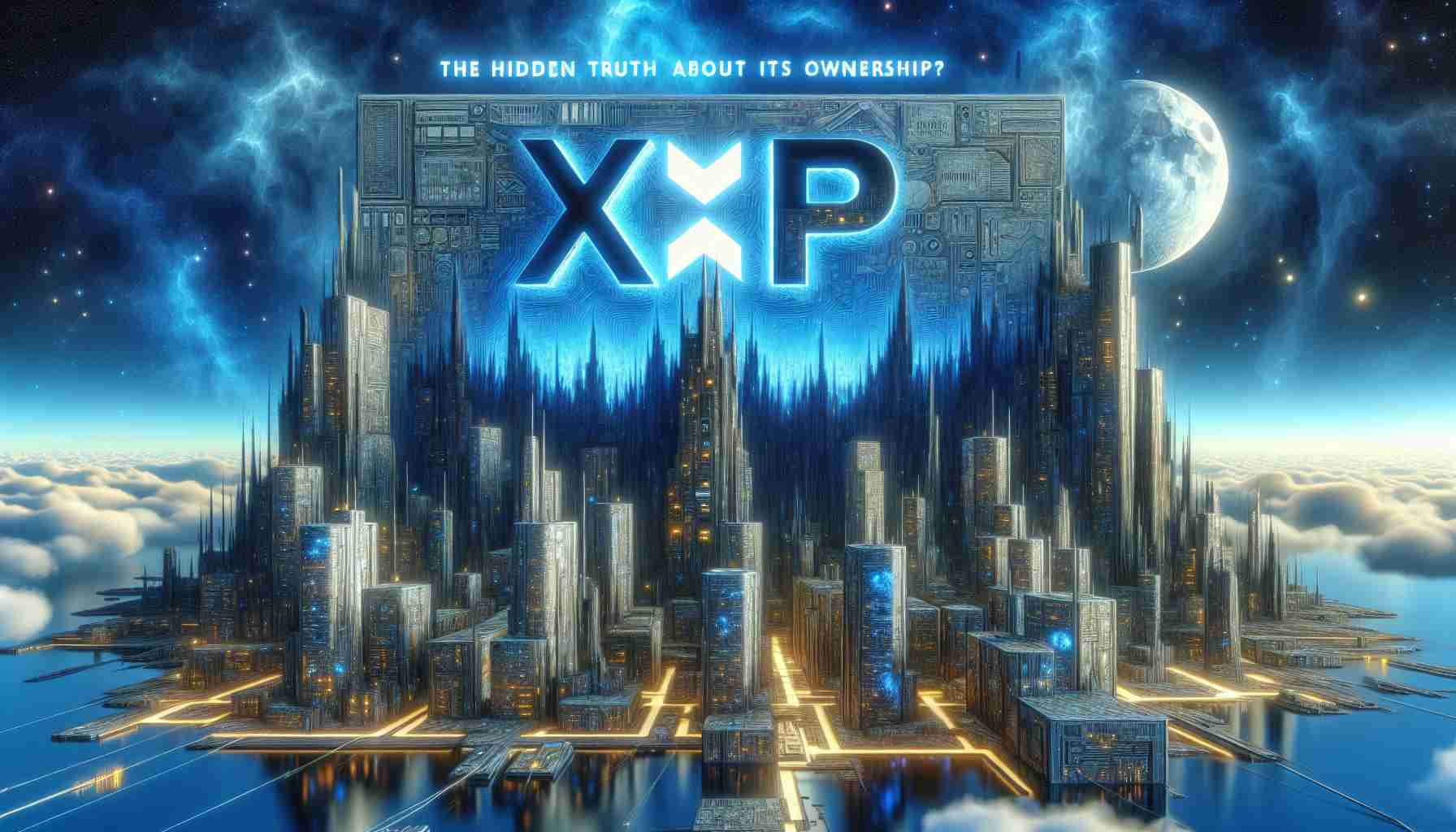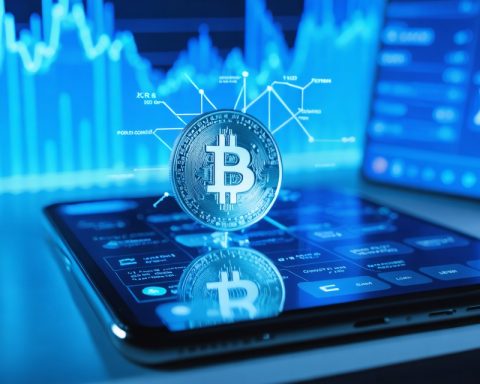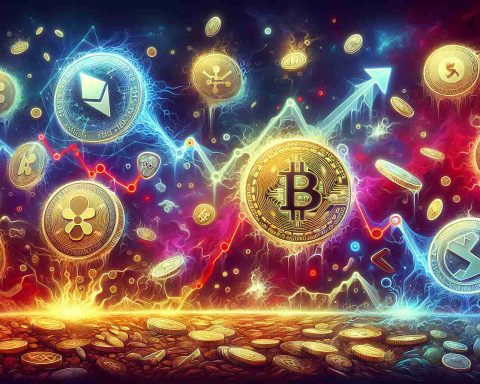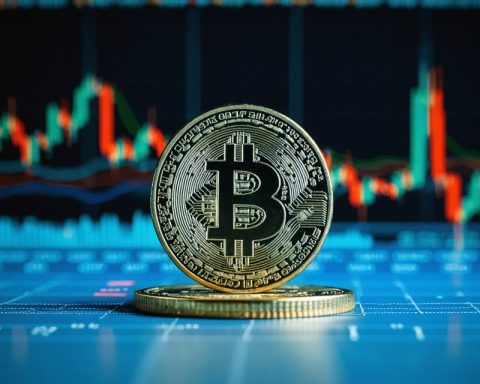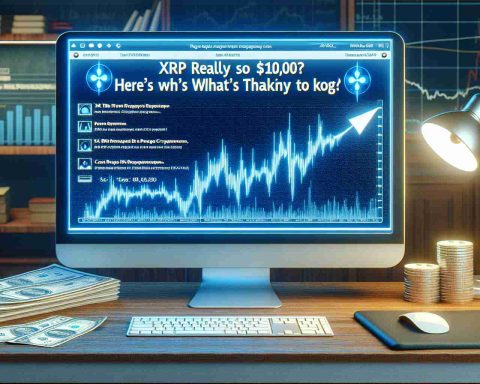Understanding XRP’s Unique Market Dynamics
As the value of Ripple’s XRP cryptocurrency continues to skyrocket, its ownership and distribution patterns have sparked intense discussions within the financial world. The impressive price increase is attributed not only to market demand but also to XRP’s key role in real-time payment processing.
Ripple Labs’ Dominance in Ownership
Ripple Labs is at the forefront, controlling a staggering 46 billion XRP tokens, mostly secured in escrow. This strategic move ensures stability in the market by regulating the release of tokens and minimizing drastic price shifts that could arise from sudden sell-offs.
Key Holders and Exchanges
Among the significant players, cryptocurrency exchanges play a vital role in XRP’s distribution. For instance, Binance possesses around 1.83 billion XRP tokens, while Upbit holds around 4.37% of the total supply. This concentration of ownership is evident, as the top 10 wallets own over 41% of the total XRP available, raising concerns about market manipulation.
Market Behavior and Implications
The concentrated nature of XRP’s distribution infuses the market with both opportunities and challenges. Large holders’ potential sell-offs could lead to steep price declines, whereas a well-managed token release strategy could perpetuate its growth and stability.
Investor Sentiment and Future Outlook
With XRP’s price surging amidst favorable conditions, many investors are feeling optimistic yet cautious. As XRP’s market evolves, understanding its intricate ownership structure and broader market impacts will be crucial for potential investors navigating this dynamic cryptocurrency landscape.
Examining the Broader Impact of XRP’s Market Dynamics
The remarkable rise of Ripple’s XRP is not merely a tale of fluctuating market prices; it reflects deeper societal and economic shifts. XRP’s emergence as a preferred medium for real-time payment processing challenges traditional banking systems, suggesting a transformative impact on how transactions are conducted globally. As global commerce increasingly relies on instantaneous transfers, the significance of cryptocurrencies like XRP could reshape financial inclusivity, particularly in underserved regions with limited banking access.
In a world where digital currencies are slowly becoming mainstream, the concentration of XRP ownership presents potential risks. As the top holders control a significant portion of the overall supply, their actions can influence market stability. This concentration raises alarms about possible manipulation and the sustainability of XRP’s rapid rise. Investors are compelled to scrutinize these dynamics closely, as large sell-offs could trigger market volatility, affecting not just traders but entire economies—particularly those exploring blockchain technology integration.
Environmentally, the implications of XRP’s ascendance are noteworthy. While the cryptocurrency industry faces increasing scrutiny over its ecological footprint, XRP’s consensus protocol is less energy-intensive compared to traditional proof-of-work systems. This distinction positions it favorably in an era where environmental sustainability is paramount, suggesting that Ripple could appeal to socially conscious investors.
Looking ahead, the trend toward regulatory frameworks for cryptocurrencies will significantly influence XRP’s long-term significance. As governments and institutions strive to delineate clear guidelines, XRP’s compliance as a digital asset could pave the way for wider adoption and legitimacy in the financial sector. The interplay between law, technology, and market dynamics will be essential in determining whether XRP can maintain its current momentum amidst an evolving global landscape.
The Future of XRP: Market Trends and Insights into a Dynamic Cryptocurrency
Understanding XRP’s Unique Market Dynamics
As interest in Ripple’s XRP cryptocurrency continues to surge, the factors influencing its market dynamics are becoming more complex and multifaceted. This article delves into the new developments, insights, and future predictions that shape XRP’s trajectory.
Key Features and Innovations
XRP is not just a digital currency; it plays a crucial role in facilitating real-time cross-border transactions. The key features that set XRP apart include:
– Speed and Efficiency: XRP transactions are confirmed in about 3-5 seconds, providing a significant advantage over traditional banks that may take days to process cross-border payments.
– Scalability: XRP can handle approximately 1,500 transactions per second, making it one of the most scalable cryptocurrencies available.
– Low Costs: Transaction fees on the XRP Ledger are notably low, typically around $0.0002 per transaction, encouraging widespread use.
Use Cases in the Financial Sector
Ripple’s technology has found various applications beyond merely serving as a digital currency. Notable use cases include:
– Banking Partnerships: Several financial institutions globally are leveraging XRP to optimize the settlement of cross-border payments, improving cash flow and reducing operating costs.
– Remittance Services: Companies like MoneyGram have incorporated XRP into their systems to streamline remittance services, allowing for quicker and more affordable transfers for consumers.
Security Aspects
XRP’s network employs advanced cryptographic algorithms to ensure the security of transactions. Unlike proof-of-work systems, which consume excessive energy, XRP’s consensus ledger is designed to secure transactions with much lower energy costs, contributing to environmental sustainability.
Pros and Cons of Investing in XRP
– Pros:
– Strong technical foundation and diverse use cases in finance.
– Rapid transaction speeds and cost-effective solutions.
– Backing by reputable institutions and partnerships.
– Cons:
– Concentrated ownership leading to market manipulation concerns.
– Ongoing regulatory scrutiny, particularly regarding security classifications.
– Potential volatility from large token sell-offs by major holders.
Trends and Market Analysis
The XRP market is influenced by trends in global finance, regulatory developments, and technological advancements. Analysts predict that as more banks and financial institutions adopt XRP, its legitimacy as a currency will increase, potentially driving greater demand and higher prices.
Limitations and Challenges
Though XRP presents numerous advantages, it faces specific challenges:
– Regulatory Uncertainty: The ongoing legal battles with the SEC regarding XRP’s classification as a security could pose risks for investors.
– Market Concentration: With a significant percentage of XRP held by a few top wallets, any market shift could result in considerable price volatility.
Pricing and Future Predictions
As of now, XRP’s price is volatile, largely influenced by market sentiment and macroeconomic factors. Experts forecast a positive trajectory under favorable regulatory outcomes and increased adoption within the financial sector. However, caution is warranted due to the unpredictable nature of the cryptocurrency market.
Conclusion
Understanding the intricate ownership structure and market dynamics of XRP is essential for potential investors navigating this evolving landscape. With its unique features and positioning within the cryptocurrency market, XRP remains a significant player with promising potentials despite facing challenges.
For more insights on cryptocurrency, visit Ripple’s official site.

